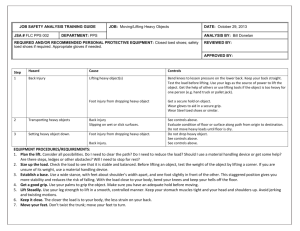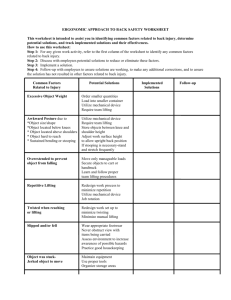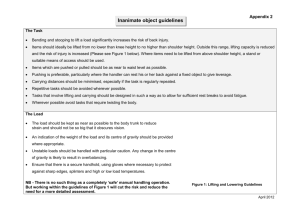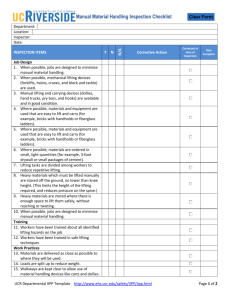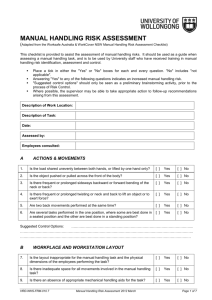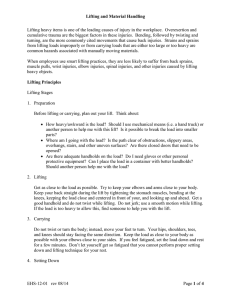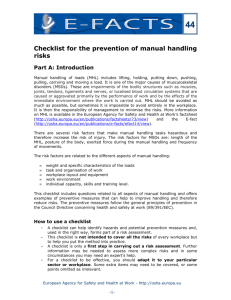manual materials handling checklist
advertisement
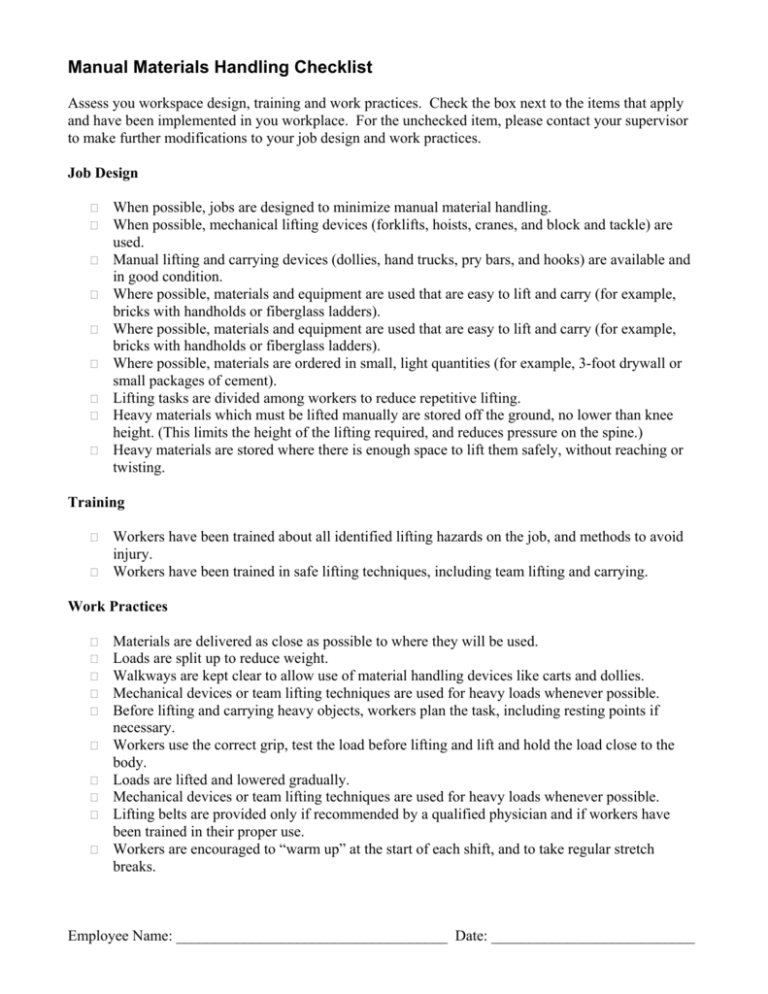
Manual Materials Handling Checklist Assess you workspace design, training and work practices. Check the box next to the items that apply and have been implemented in you workplace. For the unchecked item, please contact your supervisor to make further modifications to your job design and work practices. Job Design When possible, jobs are designed to minimize manual material handling. When possible, mechanical lifting devices (forklifts, hoists, cranes, and block and tackle) are used. Manual lifting and carrying devices (dollies, hand trucks, pry bars, and hooks) are available and in good condition. Where possible, materials and equipment are used that are easy to lift and carry (for example, bricks with handholds or fiberglass ladders). Where possible, materials and equipment are used that are easy to lift and carry (for example, bricks with handholds or fiberglass ladders). Where possible, materials are ordered in small, light quantities (for example, 3-foot drywall or small packages of cement). Lifting tasks are divided among workers to reduce repetitive lifting. Heavy materials which must be lifted manually are stored off the ground, no lower than knee height. (This limits the height of the lifting required, and reduces pressure on the spine.) Heavy materials are stored where there is enough space to lift them safely, without reaching or twisting. Training Workers have been trained about all identified lifting hazards on the job, and methods to avoid injury. Workers have been trained in safe lifting techniques, including team lifting and carrying. Work Practices Materials are delivered as close as possible to where they will be used. Loads are split up to reduce weight. Walkways are kept clear to allow use of material handling devices like carts and dollies. Mechanical devices or team lifting techniques are used for heavy loads whenever possible. Before lifting and carrying heavy objects, workers plan the task, including resting points if necessary. Workers use the correct grip, test the load before lifting and lift and hold the load close to the body. Loads are lifted and lowered gradually. Mechanical devices or team lifting techniques are used for heavy loads whenever possible. Lifting belts are provided only if recommended by a qualified physician and if workers have been trained in their proper use. Workers are encouraged to “warm up” at the start of each shift, and to take regular stretch breaks. Employee Name: ____________________________________ Date: ___________________________

